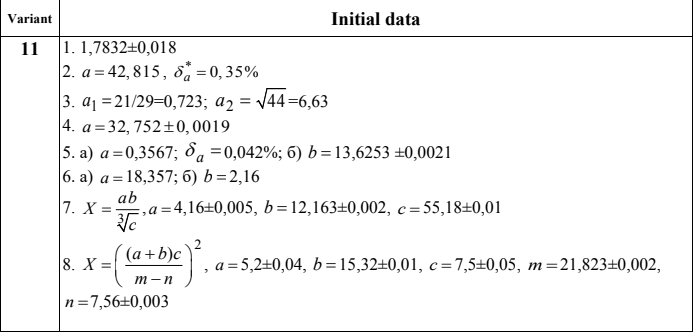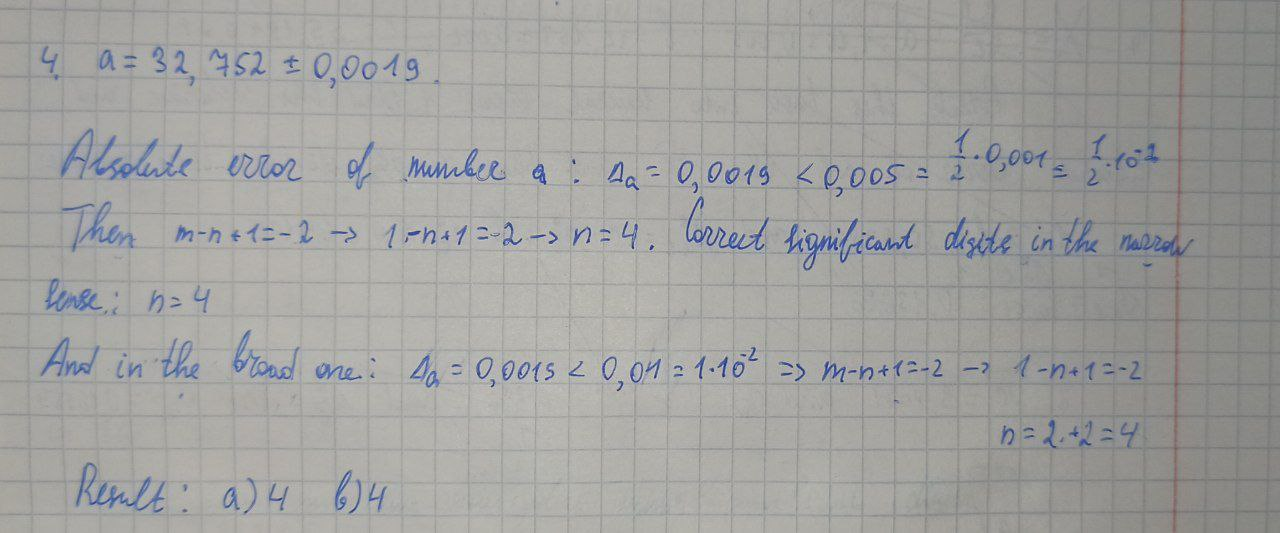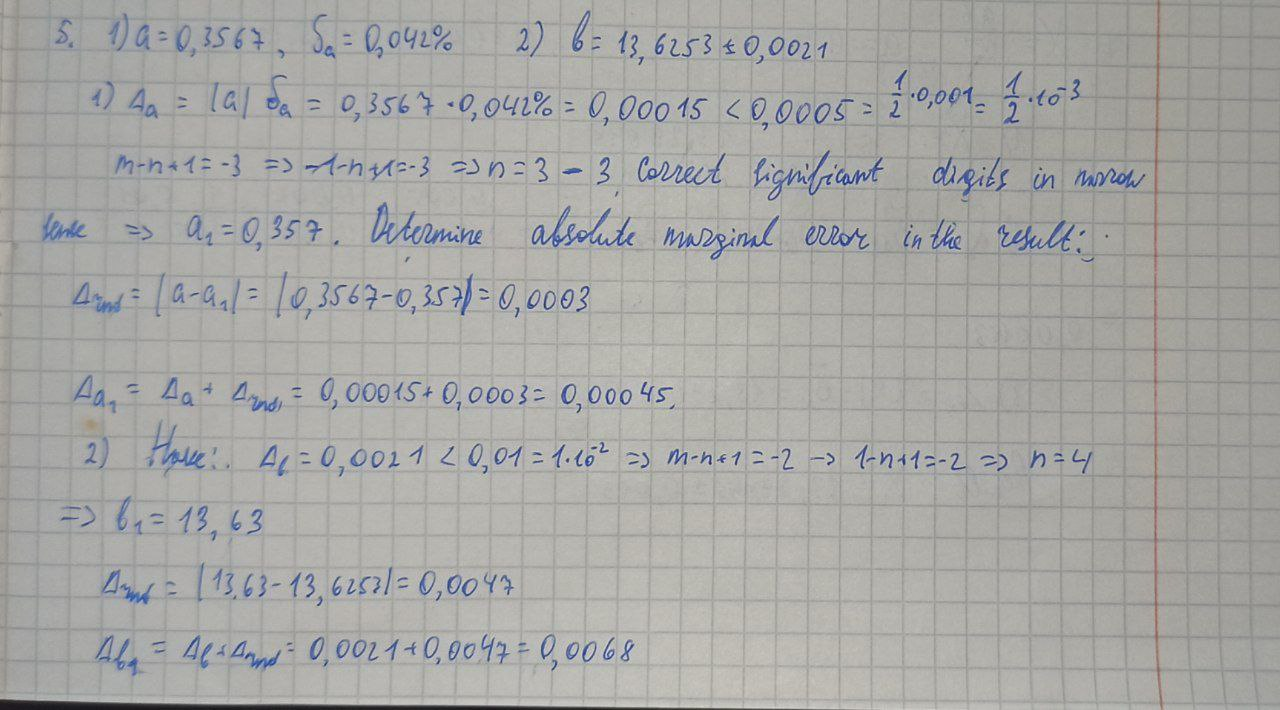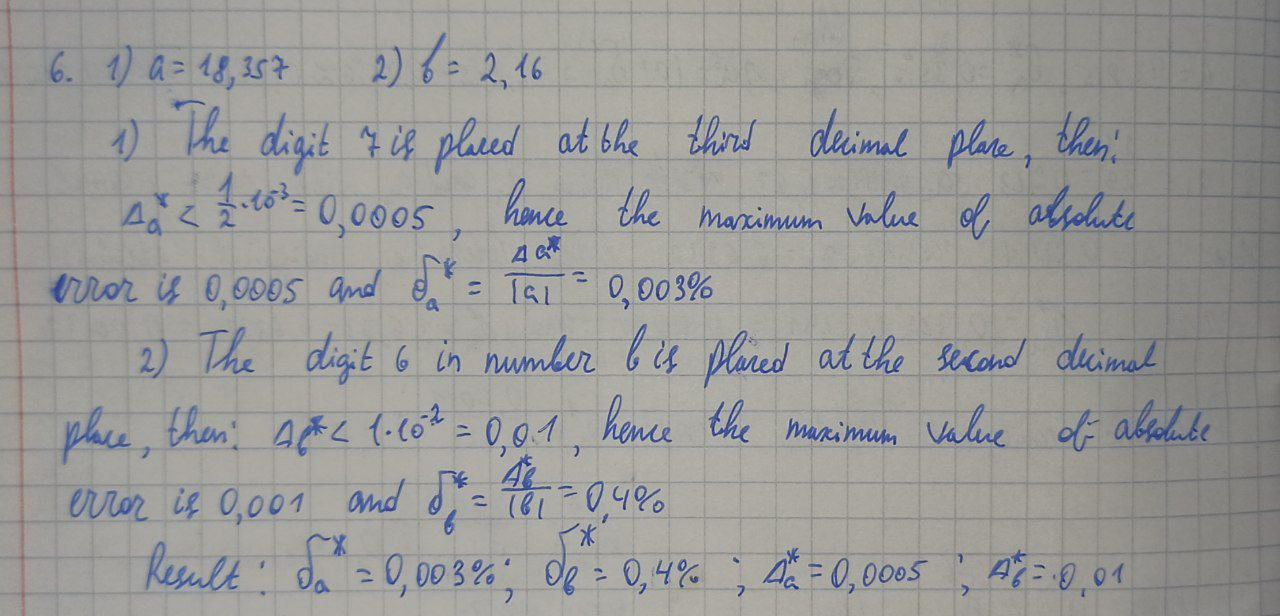
ЛБ1 / Звіт (2)
.docxMINISTRY OF EDUCATION AND SCIENCE OF UKRAINE
KHARKIV NATIONAL UNIVERSITY OF RADIO ELECTRONICS
Department of ST
Report
on the implementation of laboratory work No. 1
"Introduction to numerical methods. Fundamentals of error theory"
in the discipline "Numerical methods"
Complied by student KNT-23-1: Roman, Kravchenko
Kharkiv 2024 |
Accepted: P.E. Sytnikova,
|
The purpose of the wok: familiarization with numerical methods and the main stages of solving applied problems; studying the basis of the theory of errors
Work Progress

Determine (in percent) the maximum value of relative error of the approximate number a.

Determine the maximum value of absolute error of the approximate number a if the maximum value of relative error is known


Determine which equation is more accurate: a1 or a2?

How many correct significant digits does the approximate number a contain: а) in the narrow sense; б) in the broad sense?

Round off doubtful figures of approximate numbers a and b, leaving the correct signs:
а) number a− in the narrow sense.
б) number b− in the broad sense.
Determine the absolute error of the result.


Find the maximum value of absolute and relative errors of approximate numbers a and b if they have only correct numbers:
а )
number a−
in the narrow sense; б) number b−
in the broad sense.
)
number a−
in the narrow sense; б) number b−
in the broad sense.
Calculate and determine the maximum value of absolute and relative errors of the result.

Calculate and determine the maximum value of absolute and relative errors of the result.

